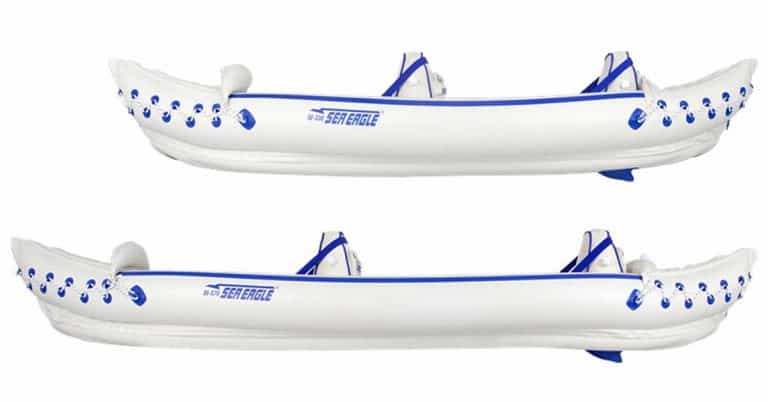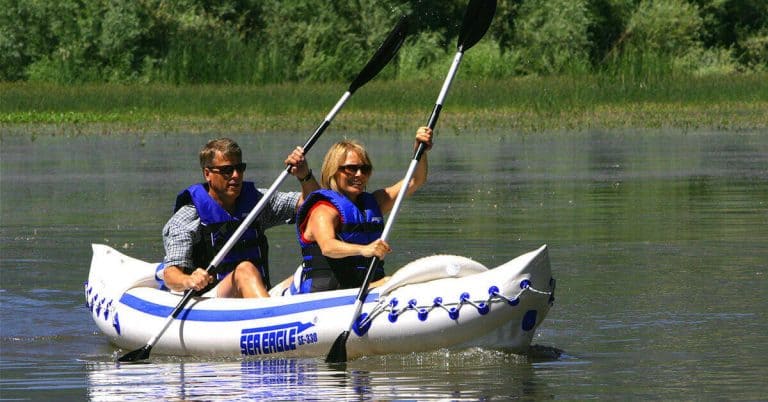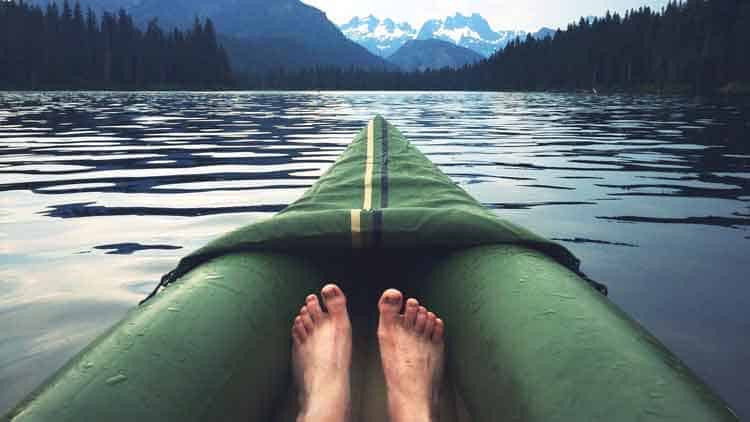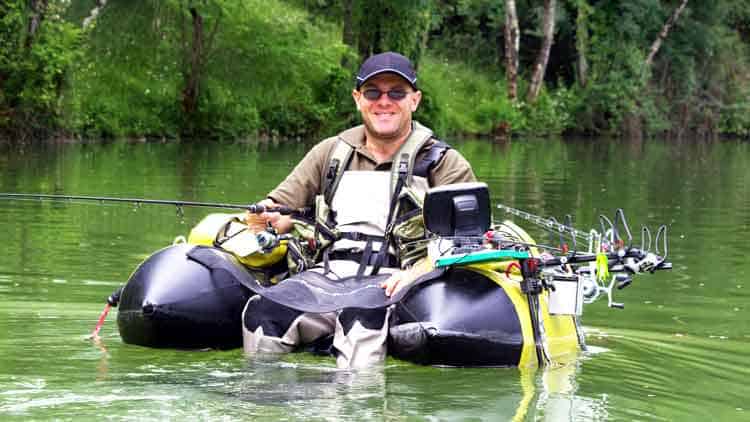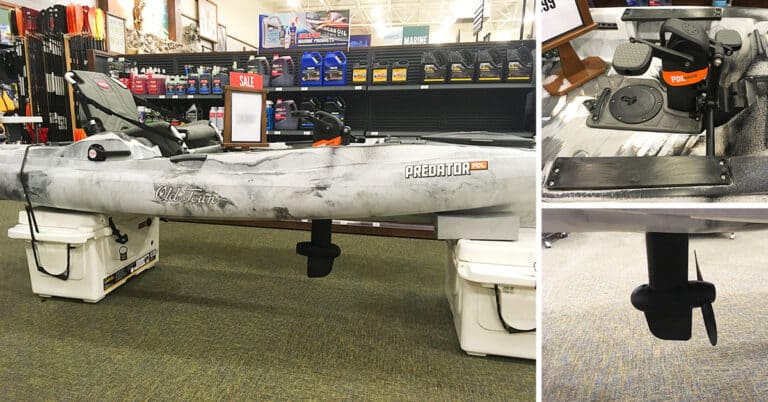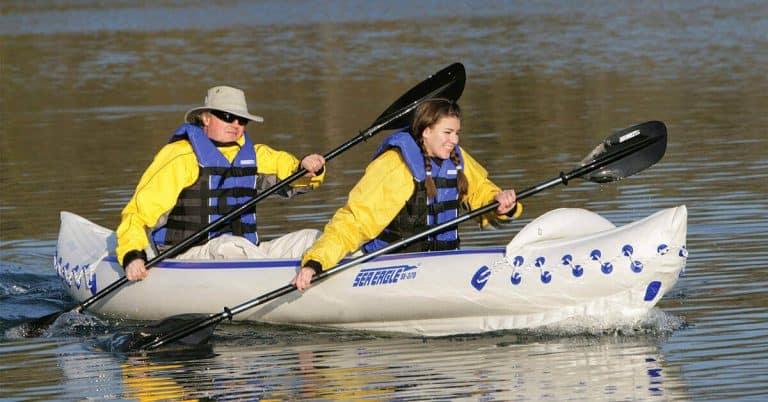Disclosure: I am compensated for purchases made through some links on this site. Click for details.
If you’re into stuff like kayaking or paddleboarding, getting your head around moisture-wicking tech can seriously up your game.
Moisture-wicking clothes play a crucial role in regulating your body temperature while allowing sweat to evaporate quickly from the surface of your skin keeping you dry and comfortable as possible.
In this next section, we’re diving headfirst into the world of moisture-wicking! We’ll sift through different fabric types that boast this feature and arm you with insider tips on selecting, wearing, and taking care of these garments. No matter if you’re a seasoned athlete or simply someone who values comfort in their everyday attire – understanding moisture-wicking could be a game-changer for your wardrobe. Let’s get started!
What Is Moisture-Wicking?
Think of moisture-wicking like a friend who has your back in sweaty situations. It’s this nifty fabric tech aimed at pulling sweat and moisture away from your skin, allowing it to evaporate rapidly. This keeps you cool and dry, letting you focus on your activities instead of uncomfortable dampness.
Just like we need air and water to thrive according to Maslow’s hierarchy, our bodies need the right gear for optimal performance – enter moisture-wicking clothes! The materials used for this kind of stuff are usually super light and allow air to pass through. This lets you stay chill and not sweaty when you’re on your kayak, canoe, or SUP.
Moisture wicking is a process by which moisture is drawn away from your skin through capillary action and moved outwards towards the fabric’s surface, where it can evaporate more easily.
So, this moisture-wicking thing isn’t just for comfort. It’s all about maintaining your body temp. Too hot or too cold? That’s a no-go.
Additionally, it reduces chafing from wet clothes rubbing on your skin during water sports.
How Does Moisture-Wicking Work?
Moisture-wicking clothes use either synthetic fibers or coatings to absorb moisture from the skin and transport it through tiny channels in the material where it can then evaporate into the air faster than traditional cotton materials would allow.
So, these materials are like your personal thermostat. They trap warmth close to you but let air flow through, so you’re snug without feeling sweaty or claustrophobic.
The main benefit of wearing moisture-wicking clothing is comfort. So, you’re breaking a sweat or getting a little wet paddling but these garments have your back. They whisk away moisture, keeping you fresh and dry.
They also provide protection from the cold when worn under other layers since they trap heat close to your body but still allow some airflow which prevents overheating due to insulation buildup caused by multiple layers being worn at once.
Additionally, because these materials are designed specifically for outdoor activities they often come with additional features like UV protection which can be beneficial when spending long periods exposed directly to sunlight while out on an adventure.
You know, when you’re picking out gear for outdoor activities, it’s crucial to keep an eye out for stuff made from fabrics that wick away moisture. It’s a big deal and super useful! Up next, we’re diving into the various kinds of fabrics that do this whole moisture-wicking thing.
Picture this— You’re out on a fishing trip or a long hike. The sun is beating down hard, and you start feeling sweaty and uncomfortable—not the ideal scenario, right? Now imagine if your clothing could help manage that sweat instead of making things worse. Sounds dreamy! This isn’t some fancy futuristic concept but something as simple as choosing the right fabric for your clothes.
Welcome to the world of moisture-wicking clothes—the superhero in our story!
Sweat control can make all the difference between an enjoyable adventure outdoors and a miserable one. Moisture-wicking materials are specifically designed for this purpose—to keep you cool when it’s hot by wicking away perspiration from your skin surface rapidly allowing evaporation to occur at pace while keeping you reasonably dry. They even regulate temperature effectively by trapping heat near your body while ensuring good air circulation. Plus, bonus features like UV protection are often thrown in.
But wait—there’s more coming up about these super-fabrics! These fabrics are quite the game-changer. They’re like your personal AC system! By pulling sweat off your skin and making it disappear into thin air, they keep you fresh as a daisy.
Plus, they cleverly trap heat near your body while still letting cool breezes pass through – that’s temperature regulation for ya! And did I mention? Many also have UV protection – because who needs sunburn on top of everything else?
Types Of Moisture-Wicking Fabrics
There are three main types of moisture-wicking fabrics: synthetic, natural, and blended. Some of the most popular types include the following fabrics and their blends.
So, each fabric shines in its own way, right? They have unique characteristics that make them a top pick for certain activities or weather conditions.
| Fabric | Moisture-Wicking | Breathability | Durability | Recommended Air Temperature |
|---|---|---|---|---|
| Polyester | High | High | High | 50°F (10°C) and above |
| Nylon | High | Moderate | High | 50°F (10°C) and above |
| Spandex | High | High | High | 50°F (10°C) and above |
| Bamboo | High | High | Moderate to High | 60°F (15°C) and above |
| Merino Wool | High | High | High | 30-60°F (-1-15.5°C) |
| Polypropylene | High | High | High | 30-60°F (-1-15.5°C) |
| Lycra | High | High | High | 50°F (10°C) and above |
| Rayon | Moderate | Moderate | Low to Moderate | 70°F (21°C) and above |
| Tencel | Moderate | High | Moderate | 60°F (15°C) and above |
| Coolmax | High | High | High | 50°F (10°C) and above |
| Hemp | Moderate | High | High | 70°F (21°C) and above |
| Linen | Low | High | High | 75°F ( 24°C) and above |
Please note that the ratings mentioned here are general, and specific products may vary in their performance. Always check the product details for accurate information on fabric properties.
Where To Buy Moisture-Wicking Clothing
You can find moisture-wicking clothing at many outfitters like:
I made a purchase at TEREN while writing this post. I got the following which are not only great for the outdoors but for everyday…
- Lightweight Traveler Pants: Phenomenal for paddling and getting wet! They dry so fast!
- Daily Driver Tee: Lightweight, breathable, super stretchy, moisture-wicking tee made from 70% naturally odor-resistant bamboo.
- Traveler Tee Long Sleeve: Made from 100% Merino Wool this t-shirt resists odor, wicks moisture, and regulates your body temperature in hot or cold environments.
- Campfire Puffy Jacket: Great if you plan to kayak/camp or kayak/hike.
Why Choose Moisture-Wicking Clothing
The benefits of moisture-wicking clothes include:
- Improved comfort levels due to less sweat build-up on your skin.
- Reduced chafing from wet clothing rubbing against your skin when paddling.
- Quicker drying times when you get sweaty, wet from paddling, and after washing.
- Boosted airflow gives you a fresh feeling by letting your body breathe more.
- Protection from UV rays.
- Odor control. Bacteria does not thrive on synthetic materials.
When To Wear Moisture-Wicking Clothes
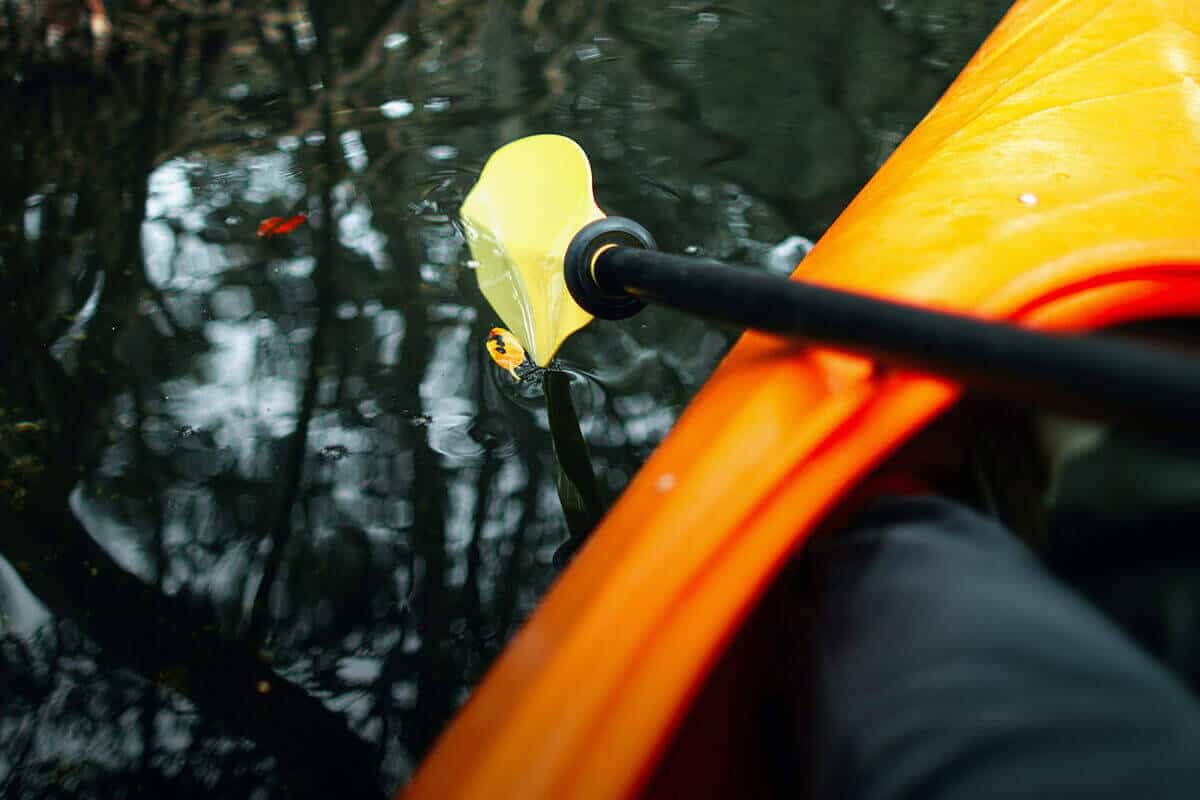
Moisture wick clothes should be worn anytime you’re engaging in any kind of physical activity – whether indoors or outdoors – especially if there’s potential for sweating heavily or getting wet.
They’re also great for layering under other garments like jackets or sweaters during colder weather because they help trap heat close to your body without adding bulkiness like regular cotton layers would do.
How To Care For Moisture-Wicking Clothes
Caring for moisture-wicking clothes isn’t much different than caring for regular clothing items – just follow these simple steps or your manufacturer’s instructions carefully:
- Wash them separately from other items.
- Turn all garments inside out before placing them into the washer.
- Set the washer on a gentle cycle using cold water only. Hot water’s a no-go—it’ll wreck the fabric.
- Opt for a mild detergent that won’t leave residue on the garment after being washed.
- Avoid using bleach or fabric softeners. These products can reduce their performance capabilities
- Hang them dry instead of putting them into a dryer. High temperatures will break down their fibers.
- So they don’t lose their shape, fold and store your clothes in a cool, dark place such as a dresser drawer.
Key Takeaway: Properly caring for your moisture-wicking clothing will ensure that they stay looking good longer while maintaining their ability to keep you comfortable and dry when kayaking, canoeing, paddleboarding, and fishing!
Conclusion
Moisture-wicking clothing is a critical component of enjoying your time outside, whether it’s kayaking, canoeing, fishing, camping, or hiking.
No matter your activity, their many fabric types and garment styles will help keep you cool and dry while protecting your skin from sunburns or other irritations.
Armed with this info, you’re all set to make a smart choice of moisture-wicking materials that’ll keep your comfort level high throughout every escapade. With the right gear, adventure awaits!
Moisture-wicking clothes? They’re a game changer, especially for outdoor adventures. Comfort and dryness, all in one! I’m a big fan of Patagonia and TEREN’s moisture-wicking and hydrophobic clothing, but make sure you prioritize comfort and fit first. Got a top brand or more tips? Share them in the discussion section!

